When a popular and distinguished director returns to the commercial cinema after an eight-year absence, one is bound to feel some qualms, especially as his best work belonged to a period far removed from the uncertain conditions of Hollywood in the late 1950’s. But the first five minutes of A Hole in the Head were enough to dispel any lingering doubts. Stylistically at least, Frank Capra had returned – intact. Taking a play by Arnold Schulman as his starting point (necessitating an obvious and rather awkward switch from Jewish to Italian-American family comedy), Capra has embellished its lightweight and fairly predictable comic situations with his old, characteristic warmth and generosity, as well as some eccentric overtones reminiscent of You Can’t Take It with You. The result is a fast-moving and cheerful divertissement, its artful combination of sentiment, comedy and child appeal all a little larger than life and thereby guaranteed to win an audience’s approval.
Though the style is as personal and assured as ever, a noticeable change of emphasis in the subject matter reveals how far Capra has moved from his philosophy of ten or twenty years ago. His modern hero (Frank Sinatra) is no longer an innocent stubbornly pitted against a monstrous political machine, but a fast-talking Miami hotel proprietor plagued with money troubles and the necessity to ‘think big’ and beset with quarrelsome relatives determined to marry him off to some nice, homely woman. Characters are introduced and then dropped after serving their purpose and there is little attempt at dramatic structure. Instead, Capra develops an inconsequential series of very funny character sketches and manages to include some late ‘fifties references for good measure – the hero’s scatty girlfriend (Carolyn Jones), with her portable radio, surfboard and minimal beach wear, might be described as a ‘bongo beatnik’, a modern sex symbol with an alarming appetite.
As in the old days, Capra retains the frankly theatrical tone of the original by shooting some of the long dialogue scenes straight on to the players; yet the effect is never stagy or boring. His control is so finely judged that there is always an onward movement, a crisp cutting edge (supplied by an old colleague, William Hornbeck) and a continuously lively surface action. A typical example is the quarrel between the brothers, with Thelma Ritter intervening, in which he actually manages to make funny the lame, repeated gag of a man sitting down on a broken chair. Most enjoyable of all, though, is the direction and shaping of the performances. Capra’s effect on his players is rather that of a great conductor on his orchestra. Given reasonably pliable material, he is able to point a phrase here or accent a beat there, at the same time insuring perfect unanimity in timing and expression. It is not surprising that Frank Sinatra here gives his most human and easy performance, that Edward G. Robinson assumes the mantle of a dry, deadpan comedian with monumental assurance, or that the hitherto mannered Eleanor Parker plays with a friendly and relaxed feminine charm. The tender little sequence in her charmingly cluttered flat is typical of this confident ensemble playing.
No characteristic Capra film would be complete without its demagogue or its final satirical scene of mass movement. Here, the figure of evil is a sharp-talking promoter (a harsh, edgy portrait by Keenan Wynn), who plays up to his old friend until he realises that his main concern is money and the lack of it. Against the background of a gaudy dog-race track, with the Miami social set in full cry, Capra creates a typical set piece, with overlapping dialogues and a screen full of jagged, gusty movement, beautifully captured in the camerawork of another veteran, William Daniels.
A Hole in the Head, then, is entirely professional entertainment in a familiar American style; it may not break any new ground, yet it is wholly alive and easily enjoyable. The final scenes – the reconciliation between father, son and attractive widow – perhaps belong to a more conventional tradition and are arbitrarily arrived at; but even the last-minute decision of the staid, stolid elder brother to join the carefree vagabond life is so typically Capra in its joyous rejection of reality that one is really rather pleased when it happens. With the exception of the Keenan Wynn episode, there is little of the social moralising which made Capra a major spokesman for the American liberal spirit of the 1930’s, for its fervent, sometimes muddle-headed New Deal optimism. But this, inevitably, is a film with a much lower ambition. Capra has clearly recognised the nature of his material and has contented himself with the opportunities afforded to rekindle his own world of wish fulfilment and sentimental fantasy. Always a shrewd showman, he has created a contemporary success-conscious hero who, for better or worse, probably suits the present mood as well as Mr Deeds did that of more than 20 years ago. Deeds will remain longer in the memory; yet, in an age when the average Hollywood product is notable for its numbing anonymity, we should be grateful that he has been able to invest a relatively minor work with so much of his former panache.
Capra is not the only veteran to make a recent creative comeback, although he has remained silent for longer than the others – during the intervening years, he made science documentaries for television. The latest films of Ford, Hitchcock, Hawks and a few others confirm that some of the older generation have weathered the current Hollywood crisis, in a period when America is slowly losing her position as a dominant film power; and it is to these resilient survivors that this article is dedicated.
John Gillett, Sight and Sound, Summer and Autumn 1959
A Hole in the Head
Directed by: Frank Capra
©: Sincap Productions
Presented by: Sincap Productions
Produced by: Frank Capra
Production Manager: Joe Cooke
Assistant Directors: Edward Mull, Jack R. Berne
Screenplay: Arnold Schulman
Based on the Broadway play ‘A Hole in the Head’ by: Arnold Schulman
Director of Photography: William H. Daniels
Edited by: William Hornbeck
Art Director: Eddie Imazu
Costumes: Edith Head
Make-up: Bernard Ponedel
Hair Stylist: Helene Parrish
Photographic Lenses by: Panavision
Music: Nelson Riddle
Orchestrations: Arthur Morton
Sound: Fred Lau
Cast
Frank Sinatra (Tony Manetta)
Edward G. Robinson (Mario Manetta)
Eleanor Parker (Mrs Rogers)
Carolyn Jones (Shirl)
Thelma Ritter (Sophie Manetta)
Keenan Wynn (Jerry Marks)
Joi Lansing (Dorine)
Connie Sawyer (Miss Wexler)
Jimmy Komack (Julius)
Dub Taylor (Fred)
Eddie Hodges (Ally)
George Dewitt (Mendy)
Benny Rubin
Ruby Dandridge
B.S. Pully
Joyce Nizzari
Pupi Campo
Eddie Hodges
USA 1959©
120 mins
Digital
SIGHT AND SOUND
Never miss an issue with Sight and Sound, the BFI’s internationally renowned film magazine. Subscribe from just £25*
*Price based on a 6-month print subscription (UK only). More info: sightandsoundsubs.bfi.org.uk

BFI SOUTHBANK
Welcome to the home of great film and TV, with three cinemas and a studio, a world-class library, regular exhibitions and a pioneering Mediatheque with 1000s of free titles for you to explore. Browse special-edition merchandise in the BFI Shop.We're also pleased to offer you a unique new space, the BFI Riverfront – with unrivalled riverside views of Waterloo Bridge and beyond, a delicious seasonal menu, plus a stylish balcony bar for cocktails or special events. Come and enjoy a pre-cinema dinner or a drink on the balcony as the sun goes down.
BECOME A BFI MEMBER
Enjoy a great package of film benefits including priority booking at BFI Southbank and BFI Festivals. Join today at bfi.org.uk/join
BFI PLAYER
We are always open online on BFI Player where you can watch the best new, cult & classic cinema on demand. Showcasing hand-picked landmark British and independent titles, films are available to watch in three distinct ways: Subscription, Rentals & Free to view.
See something different today on player.bfi.org.uk
Join the BFI mailing list for regular programme updates. Not yet registered? Create a new account at www.bfi.org.uk/signup
Programme notes and credits compiled by Sight and Sound and the BFI Documentation Unit
Notes may be edited or abridged
Questions/comments? Contact the Programme Notes team by email

